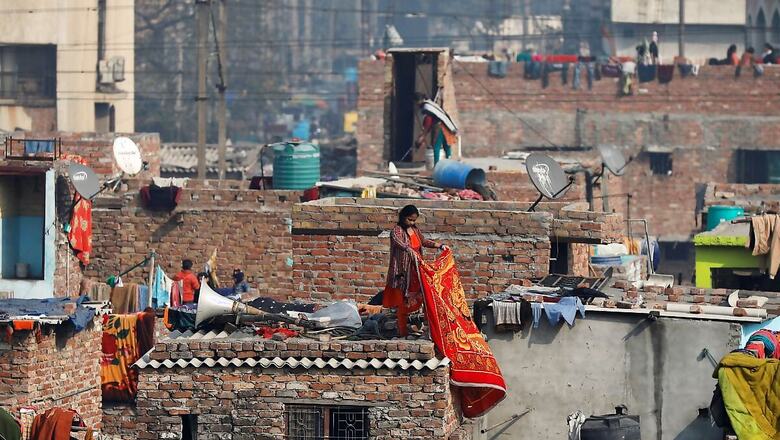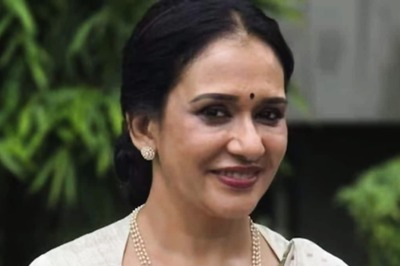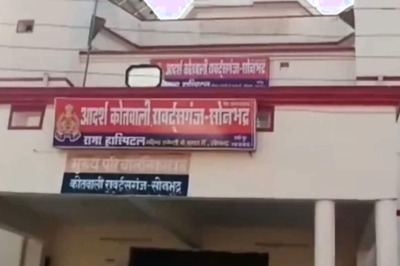
views
That over half of India will be urban very soon is known to all. It is dreadful to visualise overflowing cities with under-provided bare necessities, full of slums. An insight into some of the efforts so far throws light on why breakthroughs elude us.
The Jawaharlal Nehru Urban Renewal Mission (JNNURM) was launched in December 2005 as an over-Rs 1 lakh crore, seven-year mission (2005-12) with objective of reforms-driven fast-track development of cities across the country, with focus on efficiency in urban infrastructure, service delivery mechanism, community participation and accountability of Urban Local Bodies (ULBs)/ parastatal agencies towards citizens.
The Comptroller and Accountant General of India (CAG) conducted a performance audit of the programme to find that only 40% of the planned funds had been released up to 2011-12. Only 8.3% projects approved up to March 31, 2011 were completed by March 31, 2011. Even the Project Management Unit had not been established in nine states and Project Implementation Unit in 10 states at the time of audit, seven years after launch.
The performance in states was uneven with the usual western and southern states doing better than the rest, and the impact of the mission, lukewarm at best. Management capacity to plan and implement was missing in many states. Planning from below had not happened and constructing drains (infrastructure) but not on how to keep them clean (community and social engagement) was the focus. People-centric action was absent. Neither did the master plans reflect needs of the poor who flock cities, nor did amenities development focused on community connect at the basti level.
The Smart Cities Mission (SCM) was launched on June 15, 2015, to be completed by 2019-20. One hundred cities and towns in different states and UTs of India were selected under the SCM. Covering one-third of India’s population, the mission of SCM was “to drive economic growth and improve the quality of life of people by enabling local area development and harnessing technology that leads to smart outcomes” and to ensure that these cities are “liveable, inclusive, sustainable, (and) have thriving economies that offer multiple opportunities to people to pursue their diverse interests”.
ORG’s Special Report in August 2021 notes: “The slow progress in implementing the Smart Cities Mission (like JNNURM) is a matter of concern. Overall, less than 50% of the projects had been completed at the end of the mission’s six-year period.”
The project continues to focus on Sewerage Treatment Plans (STPs) and other capital and technology related works with very little thrust on community partnership and people-centric capacity-building. As expected, progress is uneven. Tamil Nadu, Gujarat and Madhya Pradesh have done well. The performance of Delhi, Haryana, Chhattisgarh and West Bengal is in the average category. The rest are lagging behind. Lack of management capacity and timely mobilisation of funds are again the reason for slow progress.
Madhya Pradesh, Gujarat, Maharashtra, Andhra Pradesh, Karnataka, Delhi and Chhattisgarh find a place in the top cities ranked on Sarvekshan cleanliness in 2022. The same states have built some capacities in urban governance in some cities. This lesson of absence of capacity is known for the last so many decades but we still keep trying more of the same, assuming that financial resources and management capacity will happen on its own.
There is no time to be non-evidence based in our approach to urban challenges. Data shows how slums have started growing again and that housing shortage of over 30% continues in urban areas in spite of the PMAY Urban. There is a challenge of land and rights for housing for the poor in urban areas. We cannot wish the problem away; it needs engagement and solution. Housing and basic services like electricity, water, gas, are very bare necessities. Identity validation of new city dwellers or changing addresses of the older ones, is needed with ease. Urban local governments must know who their people are and where do they live.
It is time we started planning from below. Look at the nervous and challenged faces treading to urban areas in the hope of a better life. Can we make their entry smoother and less painful through migration centres that provide a temporary roof for a few days? Is it possible to make employers contribute to the development of rental housing?
The migrants need a vote in cities for them to matter to the elected local governments. There is a case for habitation-level elected basti leaders as part of the local government. It will promote a new breed of community leaders. We need to strengthen the women’s collectives and provision for skills and credit.
More schools and health facilities are needed with the diversity to meet the differential needs of poor families migrating to cities in the hope of better lives. Immediate identification of all households with Aadhaar to enable access to public services without further questions is the way to go. This needs basti-based community action with ease of updating registration.
The other route is to go the China way of crafting cities as land grants to a company which builds property value to finance urban infrastructure. The city comes up before the people flock to them and entry is regulated by permits.
Democracies will find that very tough, even though the principle of creating wealth through urbanisation, needs to be emulated for creating new cities. From forced recognition of dense, dungeon-like census towns, we need city building mission through land grants.
The need for management capacity is well-articulated as urban local bodies are not structured to provide professional public services. The restructuring of municipal revenues also acquires priority, given the fact that, in India, it is barely 1% percent of the GDP, whereas in Finland, it is 22.4% of the GDP. Surely, there is something wrong with our assignment of tax jurisdiction for effective compliance and revenues.
Likewise, greater thrust is needed on bare necessities for the urban poor. Smaller town panchayats to notified area committee, municipalities and municipal corporations are all struggling for financial and human resources as many states provide only a small amount of the stamp duties as grant. Multiplicity of urban authorities further complicates holistic and convergent planning. Leadership development for municipal administration also needs high priority. Many Gram Panchayats come together to form a Town Panchayat and that is where the tussle sets in, in the absence of a leadership planning for urban clusters. Leadership development for urban governance needs focused attention.
Unfortunately, a very good initiative of developing 300 Rurban Clusters has been discontinued, in spite of the evaluation indicating its efficacy. A convergence-based effort with some critical gap funding, the cluster planning with the best institutions as per standards developed by Central Environmental Planning and Training (CEPT) Institute, and the School of Planning and Architecture (SPA), is the way to go.
We need to begin by assuring a guarantee of public services for every citizen across basic necessities. In fact, the thrust on census towns and emerging growth points to develop medium-sized cities of 25 to 50,000 population is likely to give even better results. Post-Covid, the expectation is that the Tier 2 and 3 cities may well be the harbingers of larger economic activity. That is where urban governance engagement needs a breakthrough in planned development.
The problems of the poor in urban areas are known. Problems will not disappear on their own. There has to be greater thrust on evidence-based approaches rather than continuing with top-down solutions. We need to understand the problem before we come up with a solution.
When asked, each of the top 10 city commissioners confirmed that community participation is what transformed their cities. Why then are the institutional partnerships with Resident Welfare Associations (RWAs), Basti Samitis, elected local leadership, still not a priority in urban governance?
Why does this, then, not become integral to urban planning? Make people matter. Reflect it in the City Master Plans. Engage with them. The problems are there; so are the solutions.
Amarjeet Sinha is a retired civil servant. The views expressed in this article are those of the author and do not represent the stand of this publication.
Read all the Latest Opinions here




















Comments
0 comment